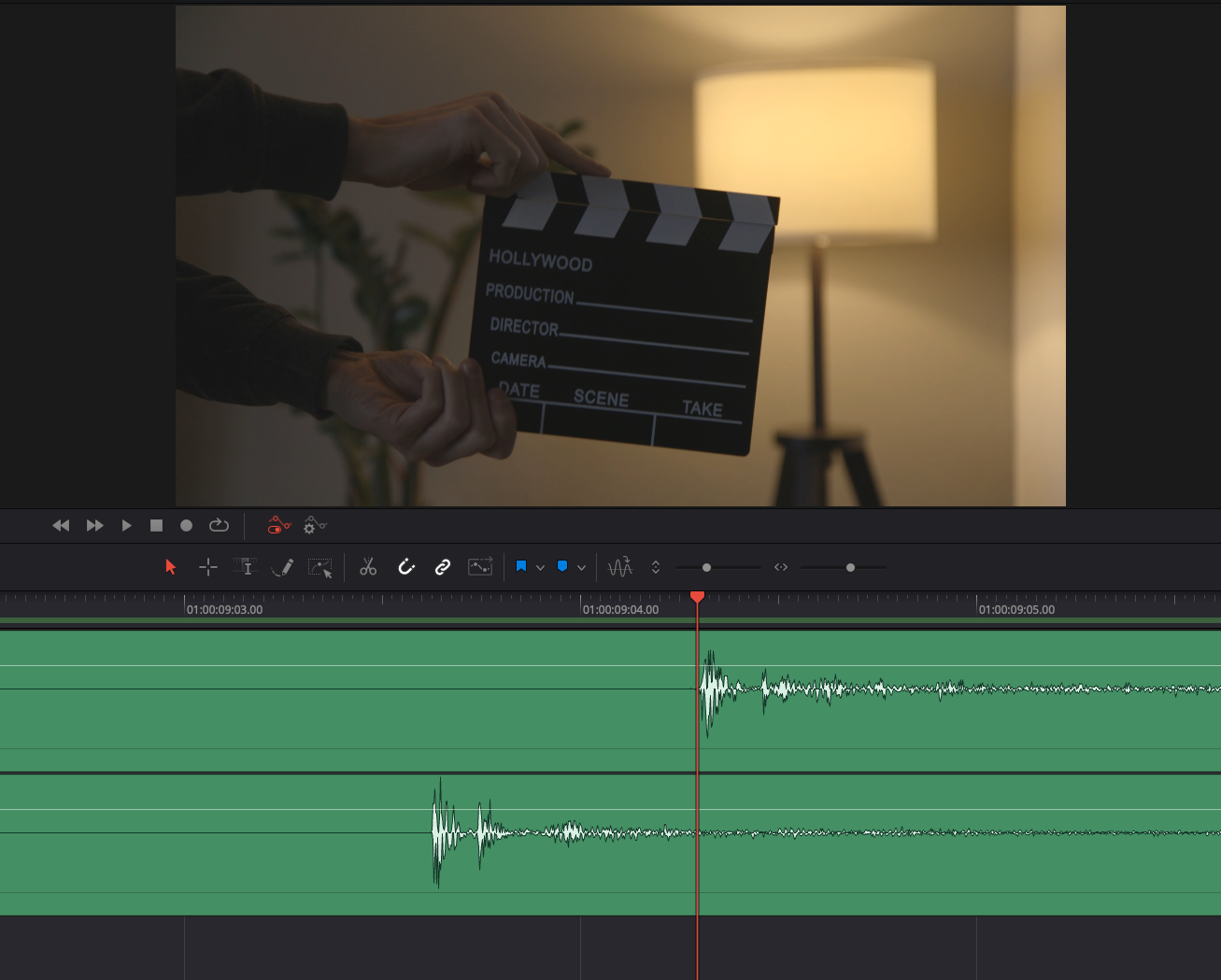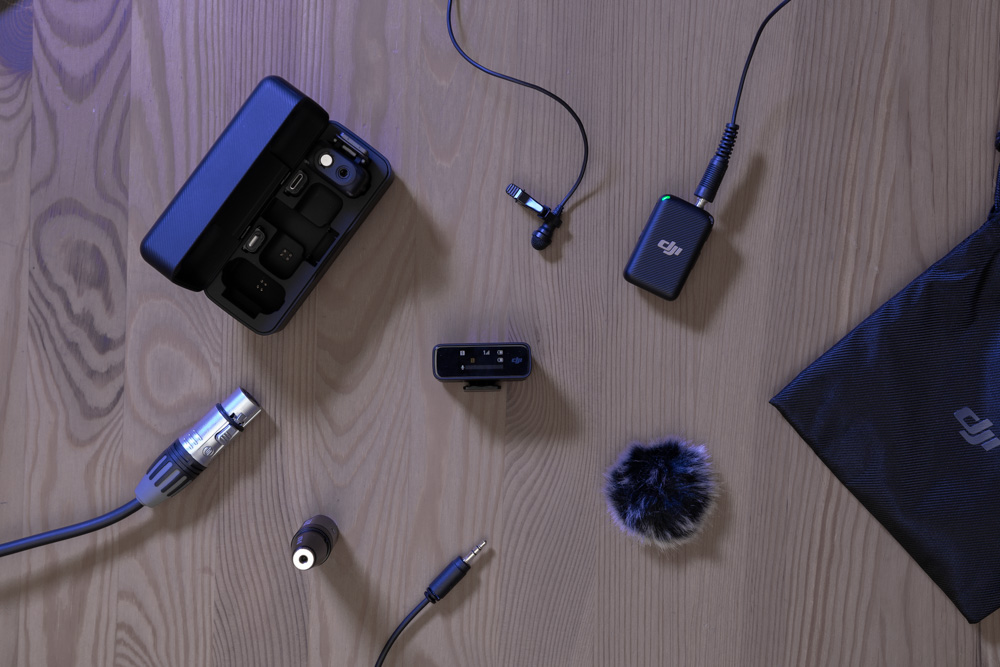DJI MIC Review
Before we start: I am no audio expert, and the DJI MIC is the first wireless audio system I have ever used. In this article, I want to take a closer look at using the DJI MIC with an external lavalier microphone and do some tests to determine its real-world latency.
Buying a wireless audio system in 2022
In September, I was looking for a wireless audio system, and I needed to decide whether I wanted to invest in an analogue or digital system. After some research, I narrowed down the product range to the Sennheiser EW 112P G4, the Rode Wireless Go II and the DJI MIC.
Due to the nature of regulations on wireless systems, I decided to pick a digital audio system using the 2.4 GHz frequency, which is free to use worldwide. The major downside is that the 2.4 GHz frequency is well-frequented since it is commonly used for WiFi or Bluetooth connectivity.
Even though Rode has years of experience creating audio products, I chose the DJI MIC due to its superior form factor. It is super convenient to have a charging case which packs and recharges all items. On top of that, you can change settings on the fly using the tiny touch screen on the receiver.
Using the DJI MIC with a Sennheiser ME2 II
The DJI MIC’s transmitters feature decent built-in microphones while also allowing you to connect an external lavalier microphone to their 3.5 mm TRS port. This enables you to better hide the transmitter on the talent but keep in mind the TRS port is not a locking port, so beware, the plug might become loose.
When I tried to connect my Sennheiser ME2 II lavalier microphone to the transmitter, it wasn’t detected since the locking ring on the lav prevented the plug from connecting flush. Therefore I decided to remove the locking ring, which I have documented in this blog post.
With the locking ring removed, the transmitter now reliably detects the Sennheiser ME2 II. To compare the built-in microphone to the lavalier mic, I connected the lav to one transmitter, which I placed next to the other unit at chest height. Then I used the USB output of the receiver to plug it into my MacBook and recorded each channel separately in Adobe Audition.
Even though the embedded recordings are compressed MP3 files, I recommend listening to the samples with headphones. Use the solo (S) button to switch between the recordings in real-time.
As you can see and hear, the signal from the external lavalier microphone is way lower. In fact, about -8 dB. For the next test, I added a +8 dB gain boost to the transmitter, which uses the external lav.
After balancing out the gain, the signal levels are pretty close. And until now, I haven’t noticed any interference noises when using the DJI MIC with the Sennheiser ME2 II. Therefore I am happy to finally have a use for the lavalier microphone, which is now part of the accessories bag.
Real-world latency tests
Within the area of latency, according to the spec sheets, DJI cannot compete with Rode. While DJI specifies 15 ms, Rode claims the Wireless GO II has only 4 ms of latency. To find out, what the latency is like in the real world, I tested the DJI MIC in two setups.
Using the TRS output with a camera
For the first test, I used my Canon C100 II and set up the audio handle as follows:
- Channel 1: DJI MIC receiver TRS output connected with the included cable and a Deity D-XLR adapter
- Channel 2: Internal mic
Then I recorded myself clapping a slate at 25 fps, loaded the footage into Davinci Resolve and jumped straight into the Fairlight tab.

Within Fairlight, the latency is clearly visible. At that point, the delay was about 0.74 subframes at 25 fps or 29.6 ms. While the screenshot might exaggerate the latency, this is clearly way more DJI claims on their datasheet. I repeated the analysis for the other times I clapped the slate, but the result was consistent at around 30 ms.
To ensure the XLR adapter doesn’t introduce any latency, I replaced the DJI MIC receiver output with a Sennheiser ME2 II and repeated the test.

Back in the Fairlight tab, there is no delay noticeable at all. That means the latency in the DJI MIC setup is solely introduced by the wireless audio system.
Using the USB sound interface mode for live streaming
In September, I was asked to stream a choir practice session online and wanted to use a wireless mic on the conductor. Since I planned to use a wired microphone for the singers, I feared that the delay of the DJI MIC could cause weird audio artefacts.
Therefore I did a small test setup in OBS to verify how the DJI MIC performs when its receiver is used in USB interface mode.
For this test, I used the following setup:
- Channel 1: Audient iD4 USB sound interface with an XLR condenser microphone.
- Channel 2: DJI MIC, connected with the included UBS-C adapter.
As in the previous test, I clapped a slate a few times, but this time, I recorded the footage at 30 fps in OBS.

This time, the average latency was 0.78 subframes, which is about 26 ms at 30 fps. While still not great, luckily, the latency is not worse compared to the TRS output mode.
In my experience, the latency of the DJI MIC shouldn’t be an issue for a streaming setup. Especially since software like OBS offer to set a Sync Offset to compensate for delays between video and audio sources.
Conclusion
The DJI MIC is a versatile wireless audio system with a neat form factor. Being able to grab the case, which packs and charges both transmitters and the receiver, is super convenient. On top of that, I like the addition of the TRS ports on the transmitters, which enables more discreet setups with an external lavalier mic. Although the latency is low enough, so viewers likely won’t notice it, DJI should try to catch up to Rode.
For a Mark II or pro version, I would love to see its latency improved and a locking TRS connector. Additionally, I am curious to see how Rode will improve upon the Rode Wireless Go II. Maybe the upcoming version will feature a charging case as well.
